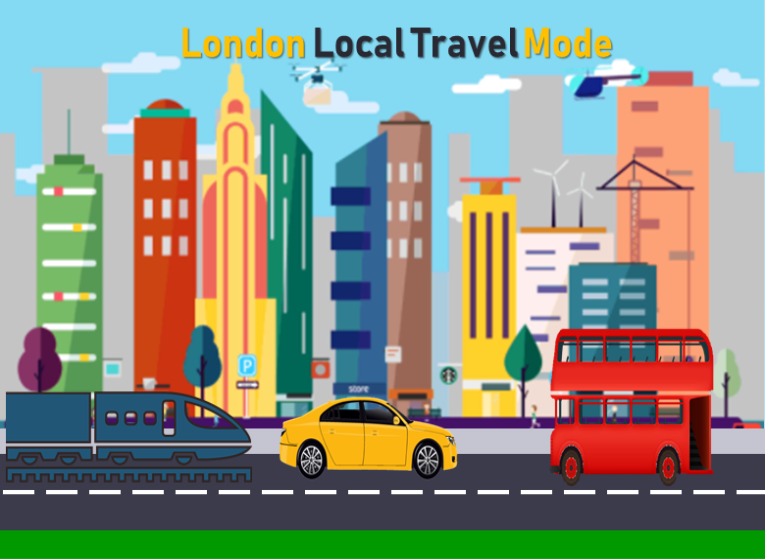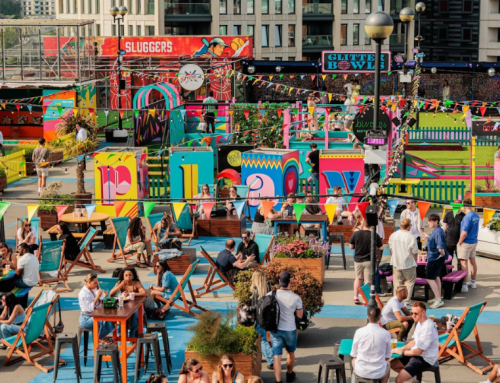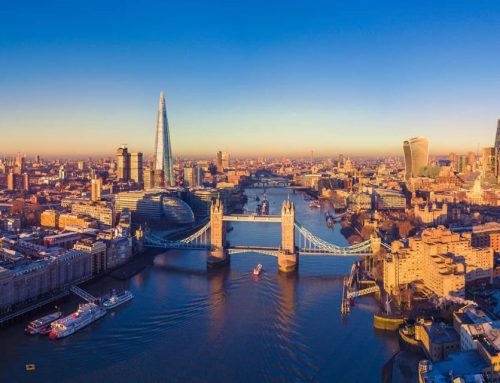
London is a vibrant city and the heartbeat of the UK. It is undoubtedly one of the most preferred destinations among tourists and business travelers. London’s commerce is staggering, with a financial center second only to New York and service sectors catering to European, UK, and global markets.
London has an extraordinary public transport network, but the excess of choice can be irresistible for first-time visitors. London is separated into nine different fare zones. Zones 1 and 2 are known as central London and are among the most popular.
Table of Contents
ToggleThe London Underground: The Backbone of the City
The London Underground, affectionately known as the Tube, is the oldest metro system in the world and remains the most popular way to travel across London. With 11 lines covering 402 kilometers, it’s the quickest way to get between significant city areas.
Key Tips for Using the Tube:
- Get an Oyster Card or Contactless Payment: These payment methods offer the cheapest fares and can be used across most public transport options in London.
- Plan Your Route: Use apps like Citymapper or the Transport for London (TfL) Journey Planner to find the fastest and least crowded routes.
- Avoid Peak Hours: The morning (7:30–9:30 a.m.) and evening (4:30–6:30 p.m.) rush hours can be hectic.
- Mind the Gap: Always watch your step when boarding or alighting.
Rail Services: Linking Suburbs and Beyond
If you wish to cover the distance comfortably and within the quickest time possible, you can use London’s Overground train network to travel across the city and beyond the Tube. Yet another option is London trams. They run in a different part of South London in the middle of Wimbledon, Beckenham, Croydon, and New Addington. Travelers can make use of the frequent and easy to access.
National Rail Enquiries provides complete information about the rail services offered in London, including routes, timetables, and fares. The National Rail website also provides a full list of train operating companies, including network maps. London Overground and National Rail services connect the city to its outer boroughs and nearby towns, making them ideal for travelers to Richmond, Stratford, or Watford Junction.
Tips for Overground Travel:
- Check Schedules: Trains run less frequently than the Tube, so planning is crucial.
- Use Railcards: Railcards can offer significant discounts if you’re traveling with family or in groups.
Docklands Light Railway (DLR): Convenient for East London
The DLR serves East London and is particularly useful for reaching destinations like Canary Wharf, Greenwich, and London City Airport. It’s a driverless system that offers a unique experience for passengers.
DLR Highlights:
- Airport Connection: The DLR provides a seamless link to London City Airport.
- Family-Friendly: Kids love sitting at the front to pretend they’re driving the train.
Taxis and Ride-Hailing Apps: Flexible and Convenient
London’s black cabs are an iconic city symbol but come with a higher price tag. Ride-hailing apps offer more affordable options.
Choosing the Right Option:
- Black Cabs: Reliable and driven by highly knowledgeable drivers who’ve passed “The Knowledge” test.
- Ride-Hailing Apps: Convenient for short trips, with fare estimates provided upfront.
- Minicabs: Pre-booked private hire vehicles can be cost-effective for longer journeys.
London Buses: Affordable and Scenic Travel
London’s special double-decker buses are a pretty appropriate and affordable means to travel across the city, offering fantastic sightseeing opportunities along with the means. Travelers can enjoy cashless services, including Travelcard, Oyster card, or contactless payment. The minimum bus fare is £1.50, up to £4.50. Night bus services are also offered near the Tube until the beginning of the daytime bus services.
Benefits of Taking the Bus:
- Sightseeing Opportunities: Unlike the Tube, buses allow you to soak in views of landmarks like Big Ben, Trafalgar Square, and the Tower Bridge.
- 24/7 Service: Many bus routes operate 24 hours, with night buses covering the city after the Tube shuts down.
- Accessibility: All buses are wheelchair accessible and have space for pushchairs.
River Bus Services
Moving by the river is an excellent means to get around London. You’ll beat the road traffic and enjoy unbelievable views of London along with the means. The traveler can board a River Thames bus service in a quick and standard mode of transport. There are boats available over there. One can enjoy London’s popular landmarks directly from the water. Special river tours usually don’t give a commentary, but one can download the visitor app for free. River bus service and quick and highly efficient links to the top London locations along the Thames make the river buses a fantastic choice for travelers and visitors.
Benefits of River Travel:
- Quick Commutes: Ideal for traveling between Westminster, Greenwich, and Canary Wharf.
- Comfortable and Scenic: Avoid road traffic while enjoying views of the city skyline.
Car Rentals
Car rentals are costly and even flexible choices for the local transport inside the cities. It saves precious time. It is also a great choice when traveling into the rustic area or countryside where public transport is inadequate. Moreover, you can appoint a chauffeur-driven car or one without a driver. There are lots of private minicab service providers available at your service. All you need to do is contact them through mobile phone or email. The London Minicab service can even share the quote of the services to know the right price. You can contact the local travel agency; they will assist you in appointing vehicles from reputed franchised companies at spirited prices.
Cycling: A Sustainable Way to Explore
London is becoming increasingly bike-friendly, with dedicated cycle lanes and bike hire schemes like Santander Cycles available across the city.
Cycling Tips:
- Hire a Bike: Santander Cycles offers 24-hour access for £1.65 per 30-minute ride.
- Plan Your Route: Use cycling apps or TfL’s Cycle Guides to find safe and scenic routes.
- Wear Safety Gear: Helmets and reflective clothing are highly recommended.
Walking: The Best Way to Discover Hidden Gems
For short distances, walking is cost-effective and an excellent way to discover London’s hidden treasures. From cobblestone alleys to quaint markets, walking lets you experience the city’s charm up close.
Walking Recommendations:
- Explore Neighborhoods: Stroll through Covent Garden, Soho, and Shoreditch.
- Follow the Thames Path: Enjoy scenic views of the River Thames and landmarks like the London Eye.
Accessibility and Inclusivity in London Transport
London’s public transport system continually improves accessibility. Step-free access is available at many underground and rail stations.
Key Accessibility Features:
- Step-Free Access: Check the TfL website for step-free entry and exit stations.
- Assistance Services: Staff are available to help at most major stations.
- Priority Seating: Reserved seats for elderly, pregnant, and disabled passengers.
Travel Cards and Contactless Payments: Simplifying Your Journey
Using an Oyster Card or contactless debit/credit card is the easiest way to pay for public transport in London. These methods automatically calculate the cheapest fares.
Fare Caps:
- Daily Cap: Travel as much as you like within Zones 1-2 for £8.10 daily.
- Weekly Cap: Frequent travelers can save with weekly caps applied automatically.
Tips for a Smooth Travel Experience:
- Plan Ahead: Use apps like Citymapper to check routes, delays, and alternatives.
- Stay Informed: Follow TfL on social media for real-time updates.
- Stay Safe: Watch your belongings and avoid empty carriages late at night.
















